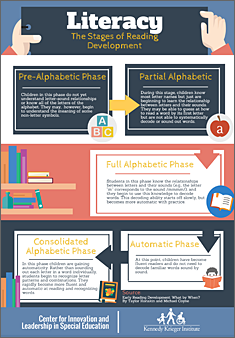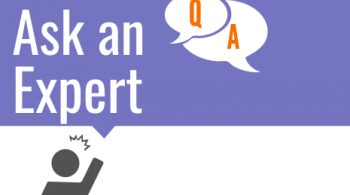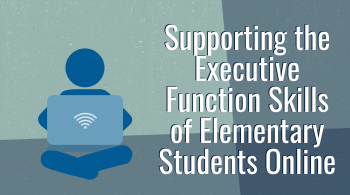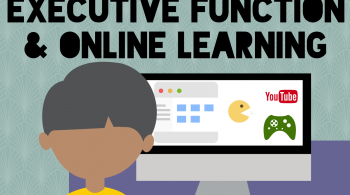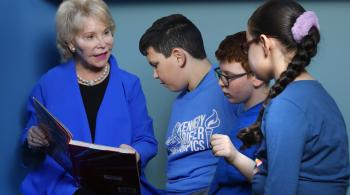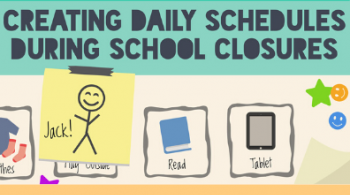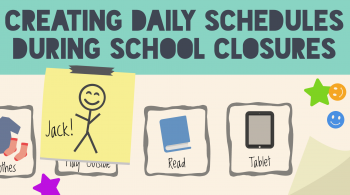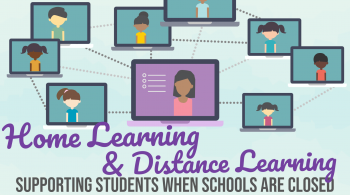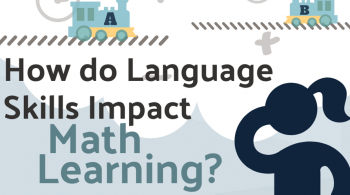By Taylor Koriakin and Michael Coyne
November 5, 2015
Taylor Koriakin worked as a research assistant in the Department of Neuropsychology at the Kennedy Krieger Institute from 2011 to 2015. She is currently a school psychology doctoral student in the Neag School of Education, University of Connecticut.
Michael Coyne is a Professor of Special Education and Educational Psychology in the Neag School of Education, University of Connecticut. His research focuses on developing and evaluating effective instruction and intervention for students experiencing reading and language difficulties.
How do we learn to read?
It may be a process that we take for granted, given how often we read in our daily lives. Whether it’s reading street signs while we drive, skimming emails at work, reading a novel on the beach, scanning through texts from friends, or sorting through junk mail, written language plays a central role in our daily activities.
Given the necessity of literacy in modern society, it may come as a surprise that reading does not come naturally to the human brain. Our brains are designed to process oral language, but reading must be specifically learned. Therefore, to develop and strengthen our “reading brains,” existing networks need to be re-purposed, or rewired, to learn to process written language. Because we are naturally adept at processing oral language, we use these existing systems as a foundation for learning to read and write.
Adams (1990) suggested a framework describing the development of reciprocal connections between how we process written language (orthographic processing) and oral language (phonological processing). But what does this process of learning to read and write look like during early development and instruction? How do children transition from sounding out each letter in a word to automatic word reading?
In this post, we have outlined the process of reading development based on the framework suggested by Ehri (2002; 2005; 2014). Also included are examples from the Common Core State Standards (CCSS) for Reading Foundational Skills that align with each phase. These standards can help us understand when students should be mastering important reading skills associated with the different phase of reading development. The standards listed are merely examples and are not intended to be an exhaustive list of all standards that align with each phase. In addition, these stages may be more continuous than blocking off the development of reading into these distinct stages; children may demonstrate skills associated with different phases concurrently.
- Pre-alphabetic phase: Children in a pre-alphabetic stage of reading do not yet understand letter-sound relationships or even know all of the letters of the alphabet. They may, however, begin to understand the meaning of some non-letter symbols. One example would be that many young children can recognize the golden arches logo as a McDonald’s restaurant without actually being able to read the word “McDonald’s.” Although not exactly reading, this represents the beginnings of understanding the relationship between symbols and their meanings. During this phase, children also begin to develop phonemic awareness skills, which constitute the ability to manipulate the sounds that make up spoken words. Phonemic awareness skills include segmenting (e.g., the sounds in the word mud are /mmm/-/uuu/-/d/) and blending (e.g., the sounds /mmm/-/uuu/-/d/ come together to make the word mud).
Aligned Standards:- Kindergarten: Follow words from left to right, top to bottom, and page by page (CCSS.ELA-LITERACY.RF.K.1a); recognize that spoken words are represented in written language by specific sequences of letters (CCSS.ELA-LITERACY.RF.K.1b); isolate and pronounce the initial, medial vowel, and final sounds (phonemes) in three-phoneme (consonant-vowel-consonant, or CVC) words (CCSS.ELA-LITERACY.RF.K.2d).
- Kindergarten: Follow words from left to right, top to bottom, and page by page (CCSS.ELA-LITERACY.RF.K.1a); recognize that spoken words are represented in written language by specific sequences of letters (CCSS.ELA-LITERACY.RF.K.1b); isolate and pronounce the initial, medial vowel, and final sounds (phonemes) in three-phoneme (consonant-vowel-consonant, or CVC) words (CCSS.ELA-LITERACY.RF.K.2d).
- Partial alphabetic: During this stage, children know most letter names but just are beginning to learn the relationship between letters and their sounds. They may be able to guess at how to read a word by its first letter but are not able to systematically decode or sound out words.
Aligned Standards:- Kindergarten: Recognize and name all upper- and lowercase letters of the alphabet (CCSS.ELA-LITERACY.RF.K.1d); read common high-frequency words by sight (CCSS.ELA-LITERACY.RF.K.3c)
- Kindergarten: Recognize and name all upper- and lowercase letters of the alphabet (CCSS.ELA-LITERACY.RF.K.1d); read common high-frequency words by sight (CCSS.ELA-LITERACY.RF.K.3c)
- Full alphabetic phase: Students move from the partial alphabetic phase to the full alphabetic phase when they know the relationships between letters and their sounds (e.g., the letter “m” corresponds to the sound /mmmm/), and they begin to use this knowledge to decode words. This decoding ability starts off slow and deliberate but becomes more automatic with practice.
Aligned Standards:- Kindergarten: Demonstrate basic knowledge of one-to-one letter-sound correspondences by producing primary or many of the most frequent sound for each consonant (CCSS.ELA-LITERACY.RF.K.3a).
- Grade 1: Decode regularly spelled one-syllable words (CCSS.ELA-LITERACY.RF.1.3b).
- Consolidated alphabetic phase: Children in this phase are gaining automaticity in their reading ability. Rather than sounding out each letter in a word individually, students begin to recognize letter patterns and combinations (e.g., -igh, ai) and common morphemes (e.g., pre-, dis-, -ing, -ed). During this stage, readers are rapidly becoming more fluent and automatic at reading and recognizing words.
Aligned Standards:- Grade 1: Know the spelling-sound correspondences for common constant digraphs (CCSS.ELA-LITERACY.RF.1.3a), now final –e and common vowel team conventions for representing long vowel sounds (CCSS.ELA-LITERACY.RF.1.3c), decode two-syllable words following basic patterns by breaking the words into syllables (CCSS.ELA-LITERACY.RF.1.3e).
- Grade 2: Decode words with common prefixes and suffixes (CCSS.ELA-LITERACY.RF.2.3d).
- Automatic phase: At this point, children have become fluent readers and do not need to decode familiar words sound by sound. This phase also aligns with the Automatic Information Processing Model proposed by LaBerge & Samuels (1974) which states that there is a limited amount of cognitive capacity available during reading. When students have developed automaticity and fluency and are no longer decoding each individual sound in a word, they have additional working memory available to allot for comprehending text. Therefore, students in this phase can handle greater demands related to comprehension. In addition, children in this phase have also developed strategies to decode unfamiliar or difficult words.
Aligned Standards:- Grades 1 and 2: Read on-level text orally with accuracy, appropriate rate, and expression on successive readings (CCSS.ELA-LITERACY.RF.1.4b; CCSS.ELA-LITERACY.RF.2.4b).
- Grade 3: Read on-level prose and poetry with accuracy, appropriate rate, and expression on successive readings (CCSS.ELA-LITERACY.RF.3.4b).
- Grade 4: Use combined knowledge of all letter-sound correspondences, syllabication patterns, and morphology (e.g., roots and suffixes) to read accurately unfamiliar multisyllabic words in context and out of context (CCSS.ELA-LITERACY.RF.4.3a).
The reading development phases are not distinct, but continuous. Also, children may demonstrate skills associated with different phases concurrently. Similarly, the standards listed are merely examples and are not intended to be an exhaustive list of all standards that align with each phase. While some children can potentially learn to read simply through exposure alone, most will require explicit instruction. All students can benefit from direct, explicit instruction with a phonics-based approach.
References:
- Adams, M. (1990). Beginning to read: Thinking and learning about print. Cambridge, MA: MIT Press.
- Ehri, L. (2002). Phases of acquisition in learning to read words and implications for teaching. In R. Stainthorp and P. Tomlinson (eds.),Learning and teaching reading (pp. 7-28). London: British Journal of Educational Psychology Monograph Series II.
- Ehri, L. (2005). Development of sight word reading: Phases and findings. In M. Snowling & C. Hulme (Eds.), The science of reading: A handbook (pp. 135-154), Malden, MA: Blackwell.
- Ehri, L. (2014). Orthographic mapping in the acquisition of sight word reading, spelling memory, and vocabulary learning. Scientific Studies of Reading, 18, 5-21.
- Honig, B., Diamond, L., & Gutlohn, L. (2013). Teaching reading sourcebook, (Updated 2nd edition). Novato, CA: Arena Press.
- LaBerge, D. & Samuels, S.J. (1974). Toward a theory of automatic information processing in reading. Cognitive Psychology, 6, 293-323.
- National Governors Association Center for Best Practices, Council of Chief State School Officers. (2010). Common Core Standards. Washington, D.C.: National Governors Association Center for Best Practices, Council of Chief State School.

